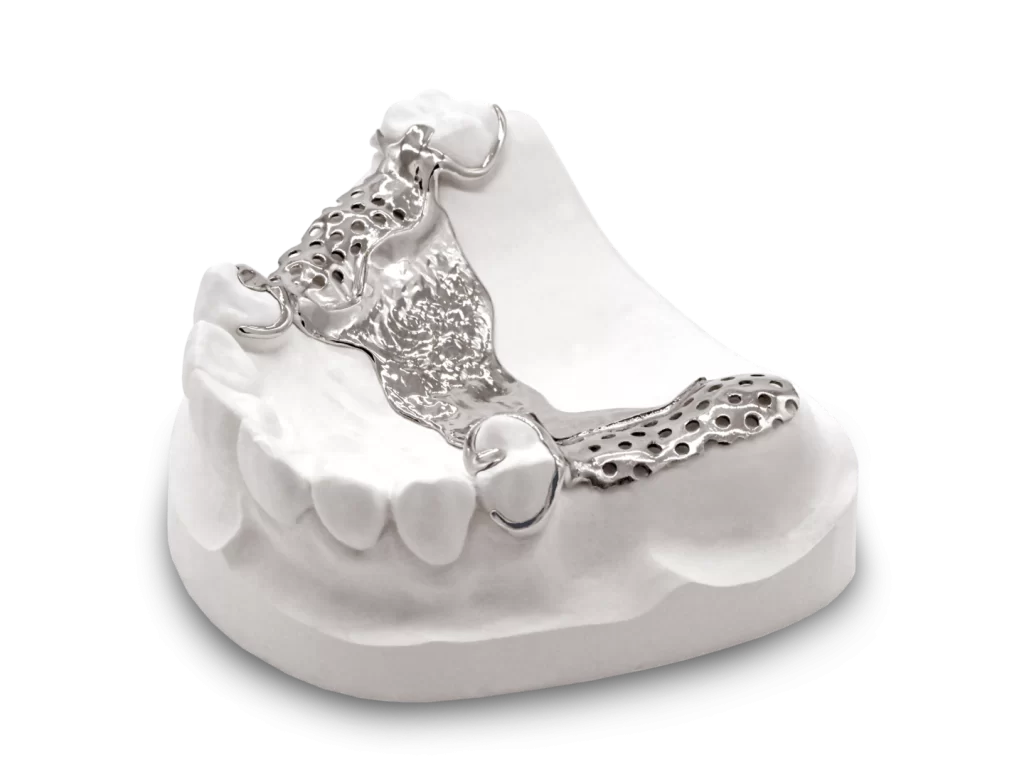PARTIAL FRAME METAL

PARTIAL FRAME PMMA

In orthodontics, partial frame systems are used to support and stabilize appliances like dentures and retainers. Two common materials used for these frames are metal and PMMA (polymethyl methacrylate). Here’s a comparison of these materials, including their advantages and disadvantages
What It Is:
- Typically made from alloys such as cobalt-chromium or titanium.
- Provides structural support for dental prosthetics or retainers.
Advantages:
- Durability: Metal frames are highly durable and resistant to wear and tear, making them ideal for long-term use.
- Strength: They offer excellent strength and stability, crucial for maintaining the position of dental appliances.
- Precision: Metal frames can be precisely engineered to fit dental prosthetics, ensuring a snug fit
Disadvantages:
- Aesthetics: Metal frames are visible and can be less aesthetically pleasing compared to PMMA, which is often a concern for patients.
- Comfort: They may cause some discomfort or irritation if not properly fitted, due to their rigidity and potential for minor adjustments.
What It Is
- Made from a type of acrylic resin that is lightweight and flexible.
- Used for creating dental prosthetics and retainers with a more natural appearance.
Advantages:
- Aesthetics: PMMA is clear or can be tinted to match the color of natural gums, making it more aesthetically pleasing and less noticeable.
- Comfort: The material is flexible and generally more comfortable to wear, with less risk of causing irritation.
- Ease of Adjustment: PMMA frames can be easier to adjust and modify, which can be beneficial for fitting.
Disadvantages:
- Durability: PMMA is less durable than metal and may be prone to cracking or wear over time.
- Strength: It provides less structural strength compared to metal, which may affect its effectiveness for certain applications.
What to Use in the Future
The choice between partial frame metal and PMMA depends on the specific needs and preferences of the patient.
-
For Durability and Strength: Metal frames might be preferred for situations requiring robust and long-lasting support.
-
For Aesthetic and Comfort: PMMA could be the better choice when appearance and comfort are top priorities.
As technology advances, future developments may offer improvements in both materials, potentially combining the benefits of durability with enhanced aesthetics and comfort. In deciding which to use, consider the specific requirements of the case, patient preferences, and the latest advancements in material technology.
